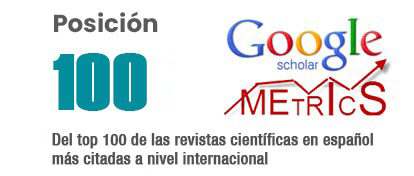A system of tasks to improve oral communication in English for students of level A1
DOI:
https://doi.org/10.62452/e0g9pn32Keywords:
Common European Framework of Reference, communication, oral communicationAbstract
Since the dawn of mankind, there was a need to communicate in the activity and practice men carried out as a social being. Communication is defined as a process by which we assign and convey meaning in an attempt to create shared understanding. The teaching of English does not escape the methodological principle of language is primarily oral. To contribute to the development of oral communication in foreign languages, since the Common Frame European of Reference, much research has been done. Regarding the specific area of this investigation, the author has found studies carried out on communication, detecting that students receiving English as a foreign language most of the time are not motivated or interested. Therefore, we need to find ways to improve oral communication trying to be as motivational and realistic as possible. An example of that are the communicative tasks we propose, apply and validate in the process of this research, achieving good results improving the students’ oral communication skills in English.
Downloads
References
Álvarez de Zayas, C. (1995). Metodología de la Investigación Científica. Universidad de Oriente. Material computarizado. CEES.
Barnlund, D. C. (2008). A Transactional Model of Communication. In, C. D. Mortensen (Eds.), Communication theory (pp. 47-57). Transaction.
Brumfit, C. (1985). Communicative methodology in language teaching: the roles of fluency and accuracy. Editorial Cambridge Language Teaching Library.
Byrne, D. (1989). Teaching oral English. Edición Revolucionaria.
Chomsky, C. (1965). Stages in language development and reading exposure. Harvard Educational Review, 1.
Faedo, A. (1988). Ejercicios Comunicativos para la Enseñanza de la Actividad Audio-oral del Inglés a Estudiantes Cubanos de los ISP. (Tesis Doctoral). Instituto Estatal de Lenguas Extranjeras de Kiev.
Faedo, A. (1994). Interacting: sistema de ejercicios comunicativos para la enseñanza de la comunicación oral del Inglés. ISP “José de la Luz y Caballero”.
González Castro, V. (1988). Profesión comunicadora. Editorial Pablo de la Torriente.
González Maura, V., Castellanos Simons, D., Córdova Llorca, M. D., Rebollar Sánchez, M., Martínez Angulo, M., Fernández González, A. M., Martínez Corona, N., & Péiiz Mato, D. (2001). Psicología para educadores. Editorial Pueblo y Educación.
Hymes, D. H. (1971). On communicative competence. University of Pennsylvania Press.
Leung, C. (2005). Convivial communication: recontextualizing communicative competence. International Journal of Applied Linguistics, 15(2), 119-143.
Lin, G. H. (2010). Book review of strategies in interlanguage communication. In, C. Faerch and G. Kasper. (Eds.), Foreign Language Studies. (pp. 24-248). Longman.
Littlewood, W. (1981). Communicative language teaching. Cambridge Teaching Library.
Mariño, M. (1999). Sistema de Tareas Pedagógicas Profesionales para la Asignatura “La Educación de la Pedagogía en el ISPH”. (Tesis de maestría). ISP José de la Luz y Caballero.
Medina, A. (2005). Modelo de la Competencia Metodológica del Profesor de Inglés para el Perfeccionamiento de de la Dirección del Proceso de Enseñanza-aprendizaje en el Nivel Medio. (Tesis doctoral). Instituto Superior Pedagógico José de la Luz y Caballero.
Plattor, E. (1981). English skill program. Gage.
Richards, J. (1992). Approaches and methods in language teaching. Cambridge University.
Rivers, Wilga M. (1977). A practical guide to the teaching of English: communicating. Mass.
Rodríguez Devesa, R. (2001). Sistema de Tareas Diagnóstico-formativas para el Diagnóstico y Formación de la Generalización del Pensamiento en la Asignatura Gramática Inglesa en los ISP. (Tesis de Maestría). ISP “José de la Luz y Caballero”.
Downloads
Published
Issue
Section
License
Copyright (c) 2022 Dalia Millán Peña (Autor/a)

This work is licensed under a Creative Commons Attribution-NonCommercial-ShareAlike 4.0 International License.
Authors who publish in Revista Metropolitana de Ciencias Aplicadas (REMCA), agree to the following terms:
1. Copyright
Authors retain unrestricted copyright to their work. Authors grant the journal the right of first publication. To this end, they assign the journal non-exclusive exploitation rights (reproduction, distribution, public communication, and transformation). Authors may enter into additional agreements for the non-exclusive distribution of the version of the work published in the journal, provided that acknowledgment of its initial publication in this journal is given.
© The authors.
2. License
The articles are published in the journal under the Creative Commons Attribution-NonCommercial-ShareAlike 4.0 International License (CC BY-NC-SA 4.0). The terms can be found at: https://creativecommons.org/licenses/by-nc-sa/4.0/deed.en
This license allows:
- Sharing: Copying and redistributing the material in any medium or format.
- Adapting: Remixing, transforming, and building upon the material.
Under the following terms:
- Attribution: You must give appropriate credit, provide a link to the license, and indicate if any changes were made. You may do this in any reasonable manner, but not in any way that suggests the licensor endorses or sponsors your use.
- NonCommercial: You may not use the material for commercial purposes.
- ShareAlike: If you remix, transform, or build upon the material, you must distribute your creation under the same license as the original work.
There are no additional restrictions. You may not apply legal terms or technological measures that legally restrict others from doing anything the license permits.




